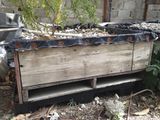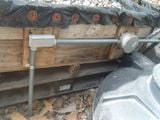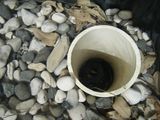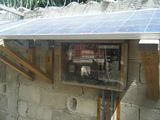No edit summary |
|||
| Line 7: | Line 7: | ||
<gallery widths=200> | <gallery widths=200> | ||
File:HCAquaponics.jpg| | File:HCAquaponics.jpg|A plant bed made from reclaimed wood. | ||
File:HCAquaponics5.JPG| | File:HCAquaponics5.JPG|The three tinacos, which served as fish tanks, were placed partially in the ground to provide the fish with greater protection from the weather by using the earth as an insulation barrier to keep the water at a more stable temperature. | ||
File:HCAquaponics8.JPG| | File:HCAquaponics8.JPG|The pumps cycled water from the fish tanks up to the plant beds. | ||
File:HCAquaponics4.JPG| | File:HCAquaponics4.JPG|Bell siphons were used to let the water flow from the plant beds to the fish tanks. | ||
File:HCAquaponics3.JPG| | File:HCAquaponics3.JPG|A solar panel was added to the system by a group after Ecofficiency had installed the system. The solar panel charged a battery, which ran the pump. The panel and battery could not provide the system with a reliable enough energy supply to keep it functioning without additional power. | ||
</gallery> | </gallery> | ||
Revision as of 00:56, 20 October 2014
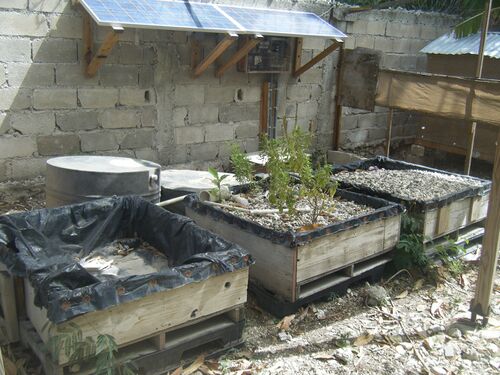
Overview
In December of 2011 Ecofficiency built an aquaponics system in Haiti Communitere. The system is comprised of three plant beds and three fish tanks, and each set of plant bed with fish tank cycled water independently of the other two. The same pump cycled water for all three systems. The system was built almost entirely out of local materials either found at Haiti Communitere or purchased nearby. Ecofficiency brought the visqueen plastic lining for the plant beds and the filters to Haiti. The plumbing was purchased at the local Eko Depot. Reclaimed wood was used to build the approximately 14 square foot plant beds.
As of July 2014 the aquaponics system was not in operation.
-
A plant bed made from reclaimed wood.
-
The three tinacos, which served as fish tanks, were placed partially in the ground to provide the fish with greater protection from the weather by using the earth as an insulation barrier to keep the water at a more stable temperature.
-
The pumps cycled water from the fish tanks up to the plant beds.
-
Bell siphons were used to let the water flow from the plant beds to the fish tanks.
-
A solar panel was added to the system by a group after Ecofficiency had installed the system. The solar panel charged a battery, which ran the pump. The panel and battery could not provide the system with a reliable enough energy supply to keep it functioning without additional power.
